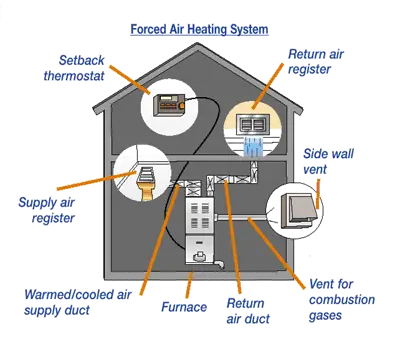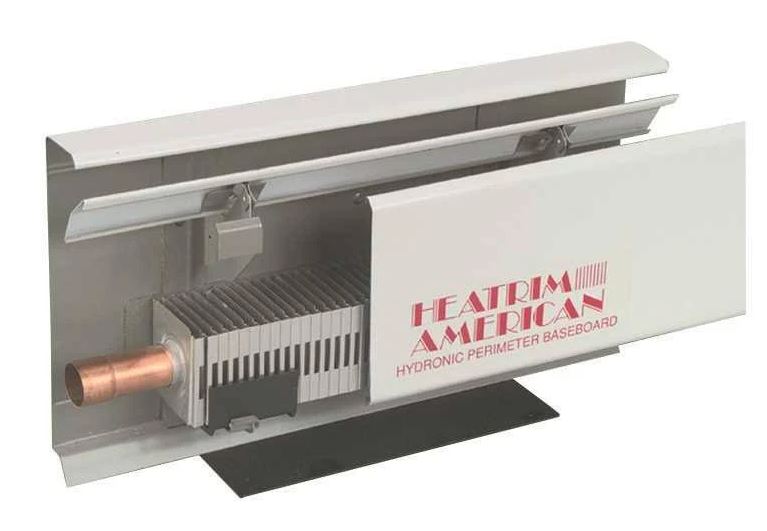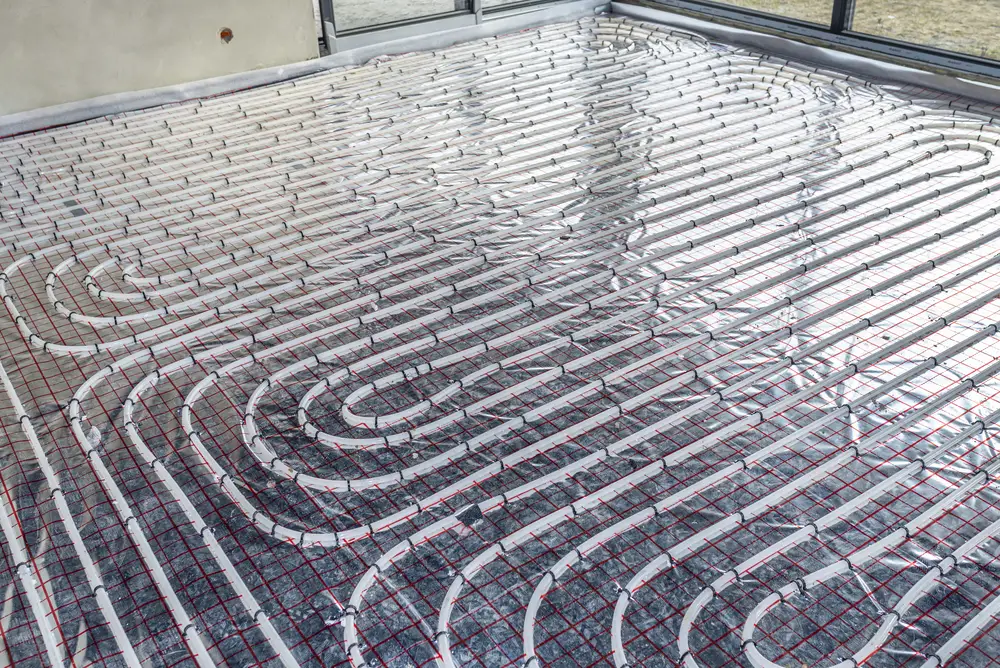Are you aware that heating your homes consumes more energy and costs more money than any other appliances and devices? Irrespective of the heating system or fuel used, home heating needs constitute nearly 45% of electricity bills.
The good news is that you can reduce your bill amount substantially by taking advantage of the free and abundant solar energy. Adopting solar home heating technologies and systems can keep you warm without draining your wallet.
The sun’s heat can be tapped in different ways and using various applications to meet the heating needs of your homes. Active and passive solar heating techniques are found to be equally beneficial for this purpose, while the applications include water heating, space heating, and pool heating.
The benefits of going solar cannot be emphasized enough. From environmental gains to financial perks, switching to solar power can be advantageous on many counts. Let us take a quick tour of the diverse choices available in solar home heating.
Components of a solar home heating system
The basic components of a solar thermal system are:
Collector: This is the part of the system that absorbs the sun’s energy and converts it to heat energy. In the passive solar heating technique, the high thermal mass structure itself acts as the collector with proper building design. In the active solar heating method, the solar collectors are fixed either on the rooftops or on the walls to collect the incident sunlight.
Storage: The heat energy from the sunlight needs to be stored for use whenever required. In passive solar heating, the structure acts as storage with its high thermal mass. In active solar heating, the heat energy is stored in water/liquid tanks and rock bins.
Distribution: The heat energy produced needs to be circulated throughout the home. Diverse methods are used to achieve this. Passive solar heating uses the strategically-placed structural components of the building to distribute heat using convection. Active solar heating systems employ mechanical devices like fans and heat pumps or physical principles like conduction, convection, and radiation to transfer heat all over the home.
Active and Passive solar heating
You can make good use of the costless and plentiful sun’s energy with passive or active solar heating techniques. These are just two different methods to capture solar power and use it to provide heat to your homes.
Passive solar heating
As the name suggests, this method of capturing the sun’s energy involves the least invasive technology. By placing materials with high thermal mass in your living space, it is possible to trap the heat energy coming through the windows, doors, walls, and floors of your home.
Construction materials such as stones, bricks, ceramic tiles, and concrete have higher thermal mass. These materials can absorb heat energy and retain it for later release. This means when the sun goes down and is no more providing warmth, these materials radiate the heat stored in them.
During the winter months, the positioning of the sun in the sky makes this task simple to achieve. The slanting sun’s rays pour in through windows and doors. With the proper interior design of your home, you can collect, distribute, and store the heat energy received during the daytime to heat your interiors at night.
Passive heating doesn’t involve an active gathering or distribution of solar energy. Some of the common design ideas for passive solar heating are:
- Large windows to let in the sunlight wherever possible.
- Use of concrete and other high thermal mass materials of masonry construction like brick and cinder block to capture the solar heat.
- Using effective insulation techniques to seal in the heat.
- Making use of insulated shutters, drapes, and blinds to trap the heat inside.
- Opening and closing mechanism for vents and windows for temperature control.
Active solar heating
Unlike the passive heating techniques, this involves the use of mechanical devices like collectors, storage tanks, and heat pumps for gathering and distributing solar energy throughout the homes. The active heating technology can be used to heat air or water using a solar collector.
The solar collectors may be placed on your rooftops or walls for maximum exposure to sunlight. The solar energy absorbed by the absorber plate is then transferred to air or water inside an enclosed panel. The heated air or water is circulated to distribute the heat to all the rooms using vents and heat pumps.
Both active and passive solar heating technologies can be combined and incorporated into homes to derive the maximum benefits.
Passive vs active solar heating
Even though both collect the sun’s energy to heat your homes, they differ in the way the technology is implemented. Let us compare both methods to get a better idea.
- Active heating uses mechanical devices for the collection, distribution, and storage of solar energy, while passive heating involves incorporating high thermal mass building materials in construction.
- Passive heating is best implemented in new constructions but an active heating mechanism can be built into new buildings as well as retrofitted into older ones.
- As it involves additional devices, active heating is more expensive than passive heating arrangement.
Even if active solar heating is the more expensive of the two, its adaptive nature and flexibility make it better suited for most homes, especially the existing ones. Let us take a detailed look at active solar heating and how it can be implemented in new and existing homes.
Active solar heating – A detailed look
Active solar heating systems are of two types – solar space heating and solar water heating. Both use solar energy to heat a fluid – air or water – and then distribute the heat or store it for later use.
Solar space heating
Have you ever noticed how the air in your car heats when left in the sun for long with windows rolled up? Air collectors imitate this to trap heat from the sun in the air in an enclosed space. As the trapped air in the solar collector gets heated, the heat is transferred naturally with convection currents or artificially using an inline fan.
Air heaters can be placed on rooftops or walls to capture the heat of the sun. The roof-mounted heaters use ducts to bring heated air into rooms, while the wall-mounted heaters fitted on south-facing walls have holes drilled on the walls for distributing heat into the room.
Solar water heating
Hydronic systems have solar collectors to absorb the sun’s energy and convert it into heat energy. They also have liquids such as water or a non-toxic glycol antifreeze trapped in a sealed panel to transfer the heat energy generated.
As the liquid heats up, it is distributed to other areas using a heat exchanger or by sending through a radiant heating system. The heat can also be stored for later use in a water storage tank.
Solar water heating systems come in three main categories – forced-air heating system, hot-water baseboard, and radiant floor heating system.
Forced-air heating system

A solar water heating system is integrated with a forced-air heating system by placing a heat exchanger in the air-return duct of the room. The air sucked into the duct from the room is heated using a heating coil (a liquid-to-air heat exchanger) of the hydronic heating system.
The heating coil needs to be large enough to transfer an adequate amount of heat even when the collector is functioning at its lowest operating temperature. In case this heat is insufficient to raise the temperature of the air to the desired level, additional heat is supplied by the furnace in the forced-air heating system.
Solar forced-air heating systems are ideal for centralized heating arrangements.
Hot-water baseboard

A hydronic baseboard heating system is installed at the ground level close to the baseboard. The positioning of the heating system is to enable convection currents to accomplish the task of circulating the heat.
The solar energy gathered by the solar collector is transferred to the water or a similar liquid in the enclosed boiler. This is circulated to the baseboard heating system using a series of pipes. The hot liquid in the pipes, in turn, heats the fins attached to them.
The denser cold air settles to the ground level and is sucked in through the vents in the heating system. As it passes through the duct, the heated fins transfer heat energy to it. As the power transfer will result in cooling down of the liquid in the pipes, it is circulated back to the boiler for reheating.
The pipes and fins are usually made of copper for easy heat transfer.
Hydronic baseboard heating systems require a water temperature of approximately 170°F for optimum functioning. As conventional solar panels cannot heat water to this temperature, higher efficiency evacuated tube collectors or a backup such as an electric heating system is added to the setup to raise the temperature of the water in the boiler to the required level.
Radiant floor systems

A radiant floor heating system uses a network of pipes embedded in the floor to circulate heated water from a solar-powered boiler. The heat from the hot water in the pipes transfers the heat to the air in the rooms.
As the heat is transferred to the air, the water in the pipes cools down and is circulated back to the boiler for reheating.
In case the solar panel system is unable to heat the water in the boiler to the required level, a backup such as a conventional boiler or an electric water heater may be added to provide the additional heat.
A well-designed radiant heating system can eliminate the need for a separate storage tank for storing solar-generated heat energy.
A radiant heating system may take longer than other heating systems to heat a room but once it gets going, it can sustain the temperature better.
A point to remember when using a radiant heating system – the floors need to be uncovered for the heating system to work efficiently. This means no carpets or rugs to cover the floor. Tiles offer the best flooring solution.
How much does a solar home heating system cost?
Even with its multiple benefits, it is not financially viable for most homeowners to go solar if the cost is beyond their means. Let us take a look at the expenses associated with the purchase, installation, and maintenance of a solar home heating system.
Collector
The options among collectors are bulk collectors, flat-plate collectors, and evacuated tube collectors. A bulk collector is most commonly used in sunny locations and it consists of a tank containing water. A standard-sized one can cost about $500.
The flat-plate collectors consist of a large heat absorbing plate and a system of tubes underneath filled with heat transfer fluid. These can cost upwards of $500. The evacuated tube collectors have rows of glass tubes with a header pipe for absorbing the incident sunlight. They are the most efficient and most expensive of the three options.
A single evacuated tube collector can cost in the range of $1,000-$2,500. For heating an entire home, more collectors need to be set up in a series. Depending on the power demand, this can go up to ten collectors.
Tanks, Valves, and plumbing
A solar home heating system requires basic plumbing. An expansion tank, piping, and valves connecting the solar collectors and backup system can set you back by $1,500. The services of a professional plumber and solar installer are necessary for this work.
For those living in colder climes, an indirect system with antifreeze is also needed. The cost of this system along with a heat exchanger and plumbing will increase the expense.
Backup system
You need a backup system to provide you heat 24×7 when the sun isn’t shining. The choices are an electric or a gas water heater. You may have to add a switch mechanism to have better control over the functioning of the backup system. All these can cost up to $1,000.
Installation cost
Based on the components in the solar heating system and its size, it can take a few days to set it up. The standard labor fee for installation is $70 per hour. This means the cost of installation can run into a few thousand dollars.
Operational cost
One of the main advantages of installing a solar home heating system is its low maintenance. Another plus point is its long lifespan. This means the system can be run with basic maintenance costs during this period.
However, if you have an additional indirect system, the antifreeze solution needs replacement every 3-5 years. This will cost a few hundred dollars.
Is solar home heating a good investment for your home?
The simple answer is yes.
Heating your homes with solar energy has multiple benefits.
Financial: Depending on the availability of sunshine in your location, a solar installation can help you save 50% to 75% of your electricity bills. The payback period of a solar system can be as little as 3 years. As they come with a long lifespan, they offer heating solutions for your home for free for the remainder of the lifetime.
Environmental: Greenhouse gas emissions, air, water, and land pollution are the main drawbacks of fossil fuels. Besides, we are fast running out of their known deposits. Switching to solar power can solve all these environmental issues and more. It would be your contribution to the cause of climate change.
Freedom from the grid: Grid electricity is mostly generated from fossil fuels and by using it you are increasing your carbon footprint. The ever-rising fuel prices are driving up the utility rates, which in turn is playing havoc with your home budget. You can escape all these in one go by adopting solar energy to heat your home. Besides the huge monthly savings on electricity bills, you gain energy independence by going solar.
Bottom line
Incorporating active and passive solar heating technologies in the home design cannot just reduce your monthly spending on electricity bills, it can do a world of good to the environmental cause by reducing your dependence on the fossil-fuel-generated grid electricity.
A big chunk of your electricity bills comes from your heating needs. If you are living in one of the sunny locations, going solar is the best gift you can give yourself as well as nature.
You may also want to take a look at our guide on How to Install Solar Panels and Inverter.

